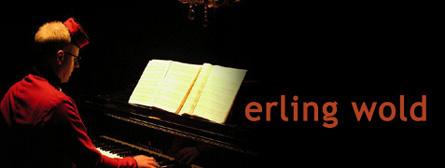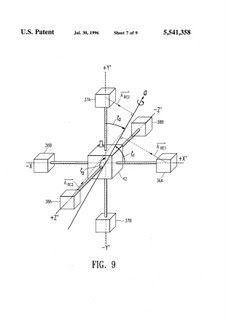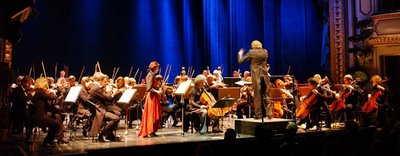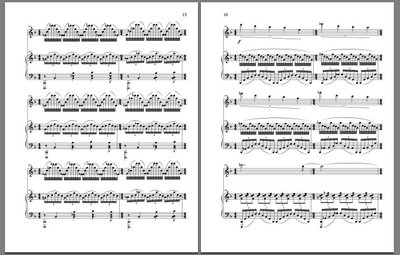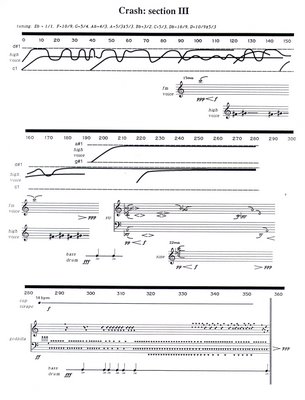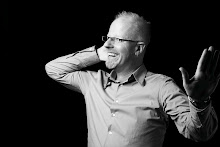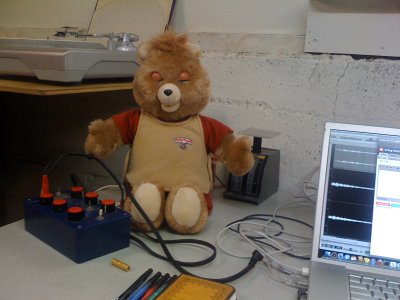
I have been fortunate enough in my career to have a few people get very excited about a few works of mine, an heartwarming occurrence. Although, two people that I respect awfully have chosen atypical and offhand works of mine from the mid 80s as their favorites. One was a theatrical work based on a game between the San Francisco 49ers and the Denver Broncos during the Joe Montana glory years, written with
Everett Shock, and featuring a recitation of a declaration, aided by an overheard projector on which the declaimer laid out an
Xs and Os play-by-play, in the style of the Declaration of Independence (a memory fitting this day of all days), but commencing with the line "when, in the course of a football game, it becomes necessary for one team" and so on.
But the other venture, which has been favorited by more than one of my erstwhile fans, was a small piece done in a small venue in Oakland, where I performed a duet with a Teddy Ruxpin® which centered on themes of objectophilia and robot sex in the modern world. In fact, the exact animatronic doll sitting on my desk today in the photo above being prepared for a comeback tour of sorts next month. You can see the blue pulse timing modulation box I built back in my 'maker' days to control its servos and to allow me to make my own, more sophisticated control tapes. My son, who was about 2 at the time, loved it, although it's possible that some of the themes may have gone over his head. He giggled all through the preceding performance that evening, in which a topless and somewhat buxom young butoh dancer, powdered in white, completed, in about ten minutes, a short walk down an incline.
Since the script was quite short, I reproduce it here for your amusement. As my wife was the voice actor for the bear, I performed a small transgendering of Teddy to Trary, and put a bit of ribbon in his hair.
TRARY(Sings) Come dream with me tonight. (Speaks) Hi, my name is Trary Razkovky. Can you and I be friends? I really enjoy talking to people. In fact, some people have told me I have a problem that way, but I don't count these people among my friends. And I do have many many friends.
I would very much like you to meet one of my very good friends. Say hello to everyone, Erling.
ERLINGHello.
TRARYWhat do you have there with you, Erling?
ERLINGIt's an accordion, Trary.
TRARYIt is a very fine looking instrument, Erling. (Pauses) Can you come a little closer, my friend?
ERLINGSure. (moves closer)
TRARY(After a while) I'd like to talk to you about something, Erling, if that's all right.
ERLINGFine.
TRARYI read a story in the newspaper.
ERLINGWhat was it about?
TRARYA very fine car dealership in St. Louis, Missouri had a contest. The dealership was to give to the winner a brand new Toyota. The single rule of this contest and the objective of those who participated was to kiss the car longer than anyone else. Of course, I was concerned for these people. How would they go to the bathroom? How would they eat or drink? People need companionship too, but I guess they were kissing the car, after all. Luckily, the very wise people at the car dealership had thought of this. They gave each person a few minutes off every hour to take care of the things that they had to.
ERLINGSo who won, Trary?
TRARYA woman won. Her name was Ellen J. Twaddle. She won by kissing the car for 110 hours, longer than anyone else who tried.
ERLINGThat's an amazing story, Trary.
Um, why did you bring it up?
TRARYWell, I began to wonder. How does she feel about the car she has won by kissing it for so long?
ERLINGI don't know.
TRARYWell, wouldn't she be more attracted to it?
ERLINGMaybe.
TRARYMaybe it would seem a little more animate? Wouldn't there be, well, a cognitive dissonance in kissing something for so long that one saw as inanimate?
ERLINGYes, I think you're right, Trary. If she had seen it as inanimate, she would be repulsed, not attracted.
TRARYThat's right, Erling. But she stayed. She even lost her job. Her company was upset with her when they found out why she had been calling in sick for five days.
ERLINGThat's quite a sacrifice.
(pause)
TRARYWould you kiss me, Erling?
ERLINGSure. (Erling kisses Trary for a long time)
TRARY(mumbling through the kiss) I hope you see me in a new light.
ERLING(drawing back) What was that?
TRARYI said, "That was nice."
I think I am in the mood to sing a song for all the people here. Could you accompany me on the accordion, Erling?
ERLINGSure. (Trary and Erling perform The Second Prayer from A Little Girl Dreams of Taking the Veil.)
Labels: composition, electronic music, music, teddy ruxpin
 Of Mordake, not yet released:
Of Mordake, not yet released: and the Missa, in the online review journal FAME:
and the Missa, in the online review journal FAME: